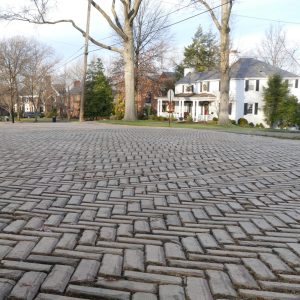House History

When my husband and I moved to Mt. Lebanon from New York City a year and a half ago, one of the things we liked best about our area in Cedarhurst was the uniqueness of each house. Each appeared built with intention—solid structure, imaginative design, and colorful bathroom tile galore—the opposite of cookie-cutter.
As we spoke with neighbors, friends, and family who are longtime residents of Lebo, one of the things that I noticed was the pride in the history of the area, and how much common knowledge of the history the residents possess. Many houses have been in families for generations, many neighbors know each other’s parents, grandparents, children, and grandchildren, and know who lives in each house nearby—or at least who used to.
That all got me thinking about the history of our house in particular. Here are some of the resources I’ve used to learn all about it.
The internet—of course
Some details about a house are easily obtained—Zillow shows things like price and tax history, the county website shows previous owner information, and depending on how old the images are, Google Maps shows a snapshot of what your front yard’s landscaping used to look like. And for an impressive 3D view, Google Earth is a popular go-to resource.
Specialty apps
For more in-depth information, apps like Rockd and SoilWeb provide a location-based view of what your house is sitting on, geologically speaking. When I was in college, a geology professor stressed the importance of knowing what’s underneath your house before you buy it. Of course, I didn’t take that advice then, but here are a few apps that provided insight post-house purchase. The Rockd app’s map pulls its data from the Pennsylvania Bureau of Topographic and Geologic Survey and the Department of Conservation and Natural Resources. A search of the Cedarhurst area shows that we’re sitting on two main geologic units—the Monongahela Group and the Waynesburg Formation—both of which are made up of limestone, shale, sandstone, and coal. Rockd also suggests relevant articles to learn more about the area’s history. If you’re interested in more surface-level history, SoilWeb provides in-depth descriptions of the soil in your area, including type of soil, drainage quality, and even info on the original vegetation. Perhaps unsurprisingly, SoilWeb says that my area was originally hardwood forest.
The Historical Society
On a recent Saturday, my husband and I visited the Historical Society of Mount Lebanon to see what other gems we could uncover about our house. We were greeted by an extremely enthusiastic and knowledgeable volunteer who helped us search the society’s files of building permits, and we did find a few, including the original permit application for building the house dated in 1955! The application also included fascinating information like the estimated cost of building ($25,000!) and the materials and specs for foundation, walls, flooring, pipes, and more. The volunteer was even kind enough to make a copy for us, and as an added bonus, we got to browse the latest exhibit on the religious institutions of Mt. Lebanon as well as the collection of Mt. Lebanon High School yearbooks for photos of family who graduated in the ’60s.
There are so many more ways to learn about the history of a home. I’ve learned valuable anecdotes about the house and its history simply by stopping to say hi with the neighbors and striking up a conversation, and paging through documentation passed down from owners past. If you’re interested in learning more about your very own Lebo castle, I encourage you to do so. They each have their own fascinating story to tell.





